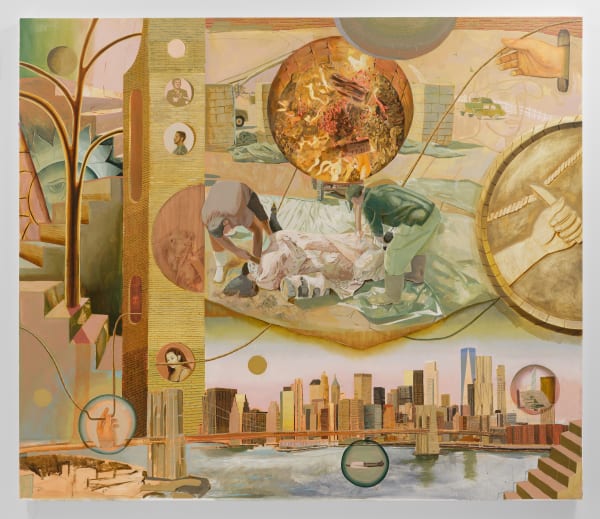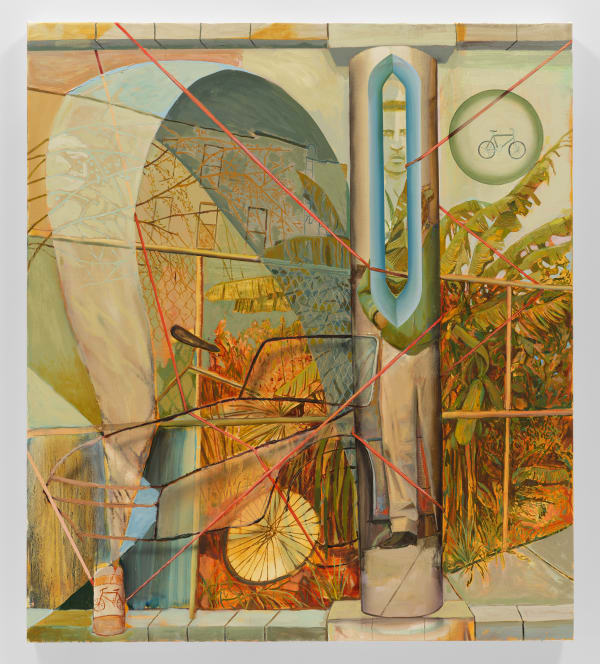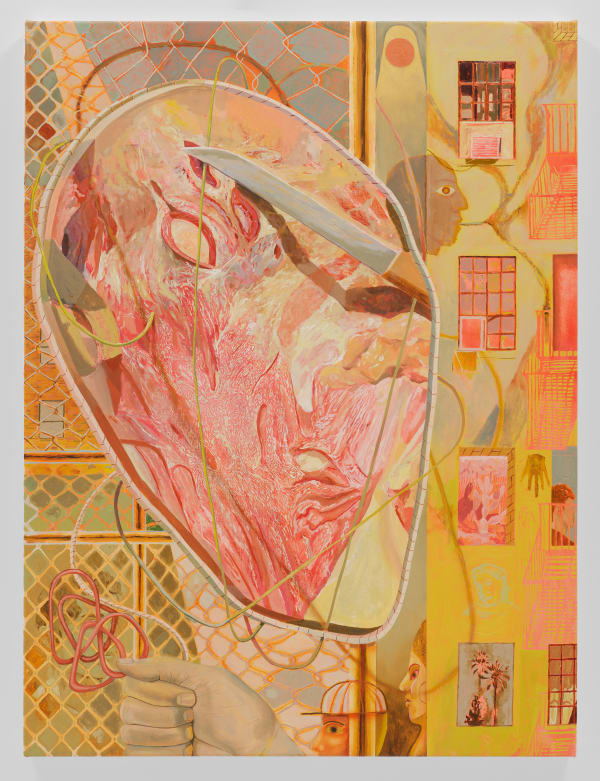José de Jesús Rodríguez and Esteban Ramón Pérez: Sobre Las Olas
José de Jesús Rodríguez and Esteban Ramón Pérez Sobre Las Olas Charles Moffett, 431 Washington Street May 21 through June 25, 2022 Opening Reception May 21, 6-8 pm
Charles Moffett is pleased to present Sobre Las Olas, a dual-artist exhibition featuring new work by Los Angeles-based artist Esteban Ramón Pérez and New York-based artist José de Jesús Rodríguez. The gallery presented work by both artists most recently at NADA Miami 2021, and this exhibition will be the first time the artists' work is shown in direct dialogue together in New York.
Both born and raised in California, Rodríguez in Salinas and Pérez in L.A., and graduates of Yale University's MFA program, Rodriguez in 2020 and Pérez in 2019, the artists and friends share much in common. In each of their respective practices, they integrate cultural and artistic sensibilities and iconography of their shared heritage into their work, yet explore this across wildly different media and in highly personal visual languages.
Text by Coleman Collins
Let's start with what we see. There are a lot of knives in Jose's paintings here. There are things being cut and sliced and butchered. What's cut is mostly meat, or bones, but there's a small moment where a disembodied hand cuts a rope. This image brings other images to mind-a horse or a boat is cut loose and stolen in the middle of the night, or else something or someone becomes unencumbered, finally. A connection broken. But in most of the other paintings, this connection or rope or thread is intact, and it weaves itself insistently throughout the picture plane.
It all fits together nicely. Esteban's works are made from stitched-together pieces of scrap leather and suede. Obviously, the hides rhyme with the meat in the paintings, but what seems most urgent is the way the work is put together, how the parts make up the whole. Here, too, the thread that ties the parts is visible, and sometimes it is even left dangling. Then on top of this ground, there are drawings made through a process that the artist refers to as "scarring"; they are scratched, slowly, with a modified tattoo machine. I appreciated knowing it was done with a tattoo machine, and I like that Esteban thinks of the marks as scars-for me, these details bring to mind the body and the way we are marked over time. In this they are reminiscent of Alberto Burri's œuvre, the way they index a trauma, suggest wounds. The works in front of us here are made from many pieces, which are not evenly spaced or gridded but of wildly varying size and shape. Some are large, sprawling, and jagged; others are quite small and round. They are made a coherent whole, sutured together by the artist's hand and vision.
This is our constant task: to make meaning in a fractured world, to synthesize the unfamiliar. I know Martin Wong is important for Jose, and I see echoes of that sensibility here-the city perceived by an outsider, endless rows of buildings upon buildings seen by a person accustomed to more clear horizons. A particular type of gaze that simultaneously considers location, community, and difference. Jose's paintings collapse time and space-each contains scenes from many places. They are intensely spatial, and the way they always present multiple spaces at once can be disorienting. It seems impossible that all these things should exist in the same picture plane, but they do. A single, solitary thing can contain multitudes. One can inhabit many worlds. Still, this fragmentation or multiplicity might seem to relegate the fragmented, multiplicitous subject into oblivion: ni de aquí, ni de allá,nowhere. What Jose and Esteban show is that this in-betweenness is useful, both aesthetically and elsewhere. It is the place of nepantla-that generative space between here and there, between abstraction and figuration, between the parts and the whole.
The title of this exhibition is Sobre las Olas, after a song by Juventino Rosas. You probably never heard the title, but you know it already. When later on at home-or on the way home in the part of the subway ride where you have service-you look it up and listen to it, you'll realize that you've known it all along. You thought it was here, but it's there. You thought it was one thing, but it's the other. Maybe it's both. In any case, it's a lovely title for a show like this, where the work is all about showing us what should have been clear all along-the ties that bind us, the way that seemingly incongruous things fit together.





















